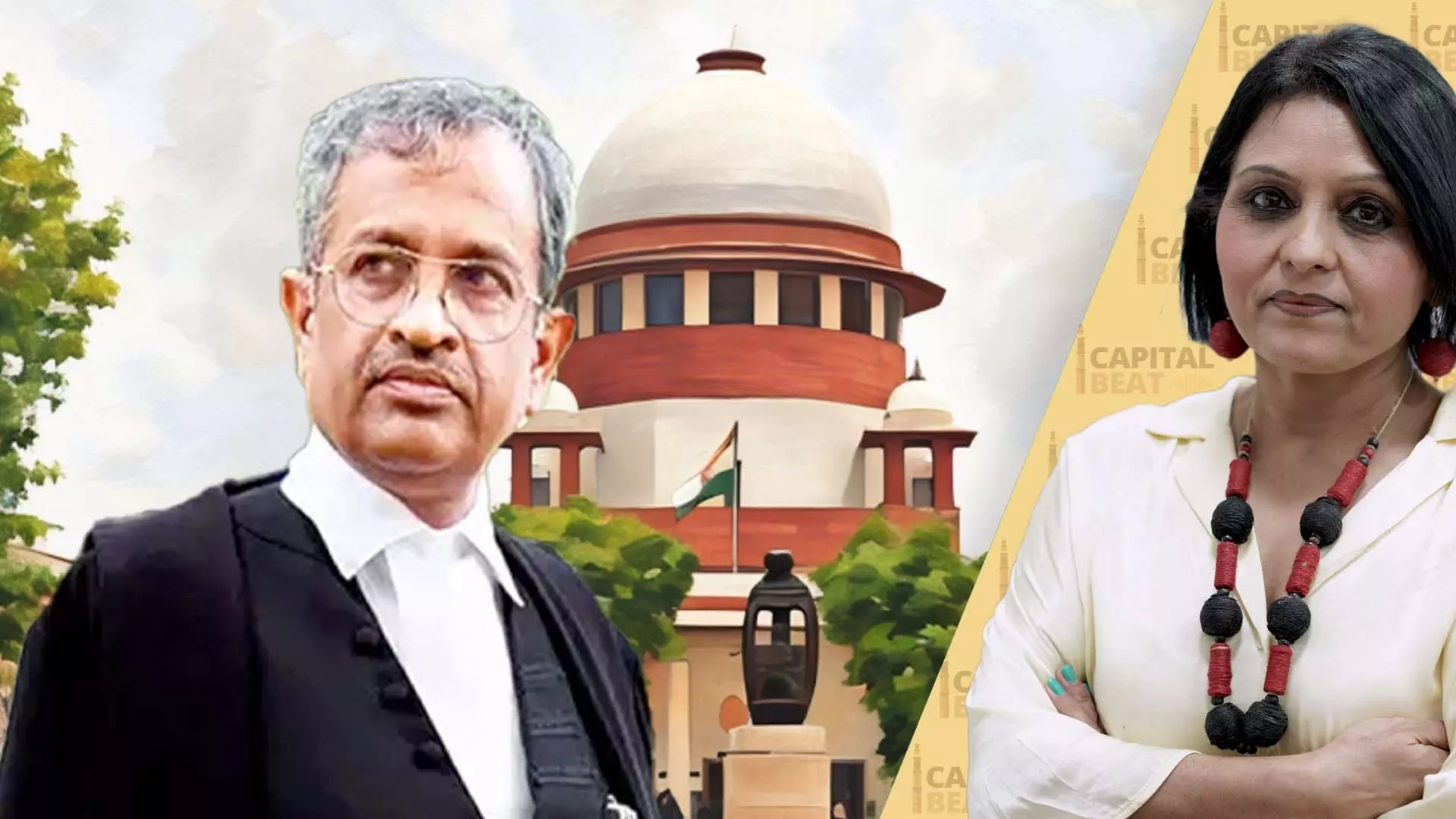
Sanjay Hegde explains that the Constitution provides that whenever there are questions of law on which the President requires the advice of the SC, a reference can be made to the Court, and the Court will give its opinion.
Presidential reference: Is it a win for Centre? SC lawyer Sanjay Hegde explains
Supreme Court’s landmark opinion says Governors can’t stall bills indefinitely, but courts can’t impose timelines either — is this a constitutional middle path?

The Federal spoke to senior Supreme Court lawyer and constitutional expert Sanjay Hegde for this Capital Beat episode, breaking down the Supreme Court’s advisory opinion on the powers of Governors and the President over state Bills, and what the ruling means for federalism and democracy.
It is not a verdict, it is an advisory opinion. The Constitution provides that whenever there are questions of law on which the President requires the advice of the Supreme Court, a reference can be made to the Court, and the Court will give its opinion.
Here, the opinion is unanimous. While it was being delivered, the judges even mentioned that they were thankful to one of their number for agreeing with the unanimity. That tells you there may initially have been differences of opinion which were ultimately melted down to arrive at a single, unanimous view.
What the Court has essentially done is to say: we will not have hard deadlines. We will not tell constitutional authorities that “you must act by this date” or that, in default, a Bill will automatically become law without their assent. At the same time, the absence of a fixed deadline is not meant to be read as a blank cheque.
There is an old analogy from the court system itself. Once, the Supreme Court directed a High Court to hear a matter and finish it within a week. It was an election-related case. A judge of the Calcutta High Court heard it, disposed it, but then wrote a judgment saying: the Supreme Court is not a “superior” court in the sense of administrative control over High Courts. High Courts are not “subordinate”. Both are constitutional courts. Therefore, the Supreme Court cannot set strict deadlines in that manner.
After that episode, the Supreme Court changed its language. Instead of commanding hard deadlines, it began “requesting” High Courts to finish matters preferably within three months, or six months, and so on. The judge who took that stand later became Chief Justice of India.
That is how constitutions work: constitutional organs must treat each other with respect. You cannot run a constitutional system on the basis of diktats alone.
What happens, however, when a constitutional organ simply refuses to function? The opinion recognises that courts can still ask the Governor or President to act. But the Court will not set hard deadlines, and it will not assume that it can act in their place. You cannot efface the Governor out of the legislative scheme entirely.
If Governors now treat the absence of hard timelines as a licence to do nothing, then the question of the very utility of the office of Governor in a democracy will arise.
If such situations continue, the office of the Governor and the very requirement for Governors will come under serious question. The Governor is an unelected constitutional authority.
The voice of the people lies with the elected government of the day. A seven-judge Bench in Shamsher Singh made it clear that India does not follow a presidential system. Ours is a system of parliamentary democracy. Governors have very little discretion; they are bound, in most matters, by cabinet advice.
This opinion clarifies that in the matter of assent to Bills, Governors may not always be bound by cabinet advice. But it also makes it clear that they cannot take no decision at all. The idea of an implicit “pocket veto” has been largely erased.
At the same time, the Court refuses to say: if there is delay beyond X days, the Governor simply ceases to matter. The Court is signalling that if Governors treat this as liberty or licence, their office itself will be questioned.
Historically, under colonial rule, Governors and the 1935 Act were used to stall elected provincial governments. That contributed to the freedom struggle. While drafting the Constitution, there was a debate on whether to have Governors at all. They were retained on the understanding that they would be above the political whirlpool, acting as friend, philosopher and guide, and as purely constitutional heads.
Any Governor who interferes with the working of an elected government—by action or inaction—will not have the legislative backing or the will of the people behind him.
If the reasons are thin or arbitrary, the Court will have to evolve innovative ways of ensuring that the will of the people, as expressed through an elected legislature, is not thwarted. The opinion does not spell out those innovations now, but it does not close that door either.
The criticism is that the Court could have gone further—it could have set explicit limits—and chose not to. Whether that means it has failed in its constitutional responsibility, or whether it has struck the right balance between comity and control, only time will tell.
It is also important to see the Constitution and its interpretation as neutral, not through the political lens of the moment. Today, one party may feel benefited; tomorrow, the roles may reverse. The principles will remain.
What applies to the President at the Centre should apply to the Governor in the states. You cannot have a President who refuses to sign laws passed by Parliament, and you cannot have Governors who indefinitely block laws passed by state Assemblies. The opinion keeps that larger structure in place while consciously avoiding hard, mechanical rules.

